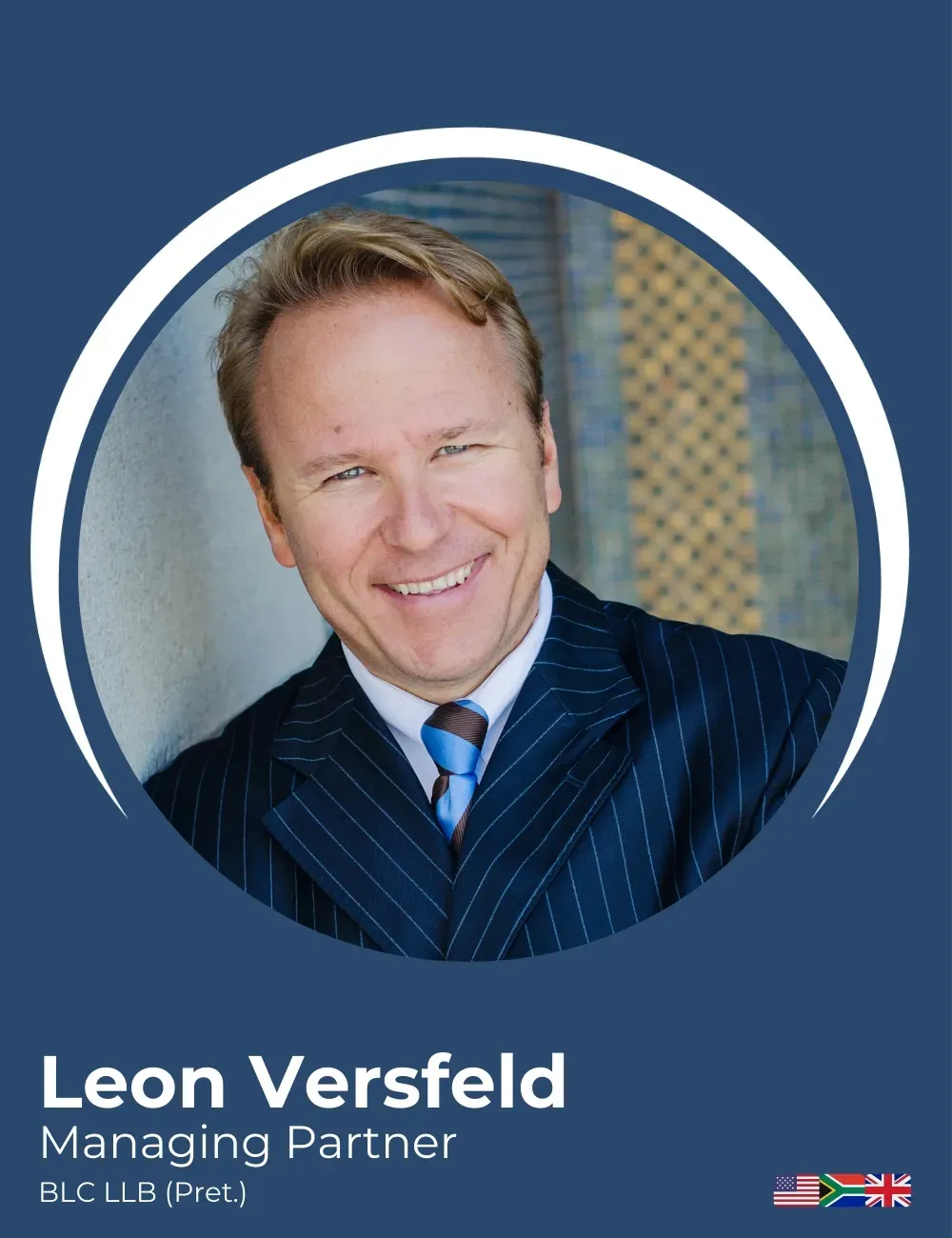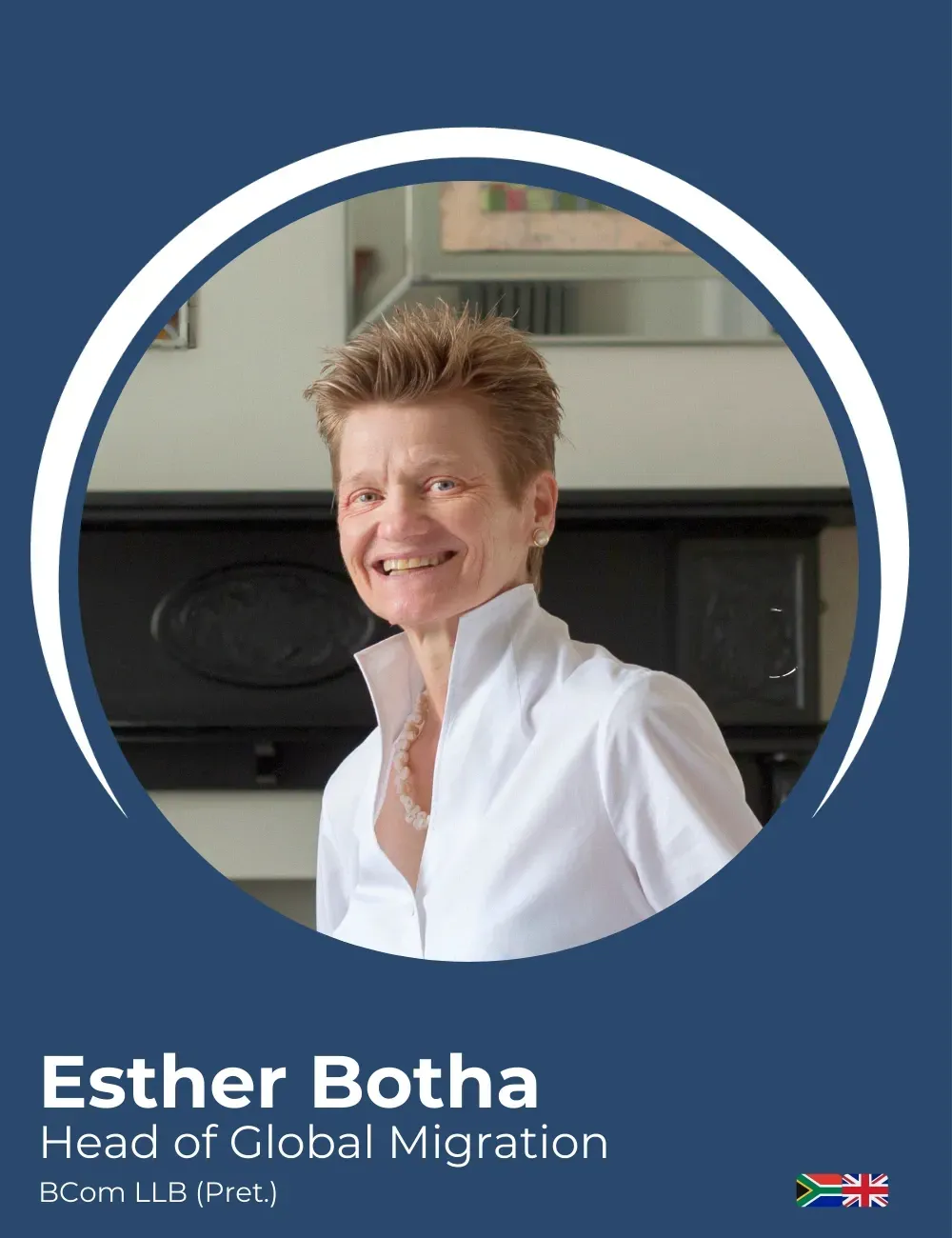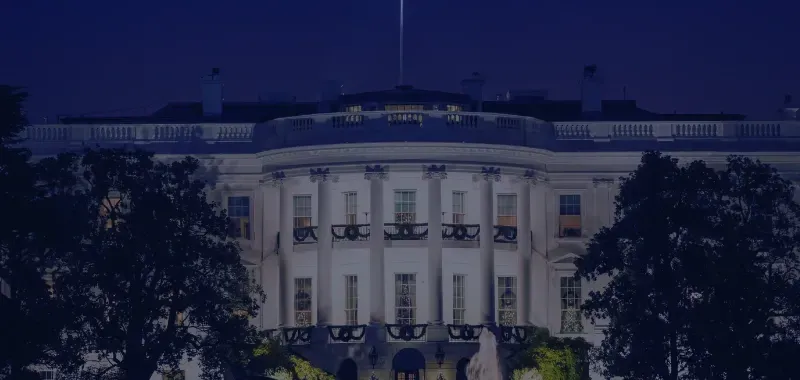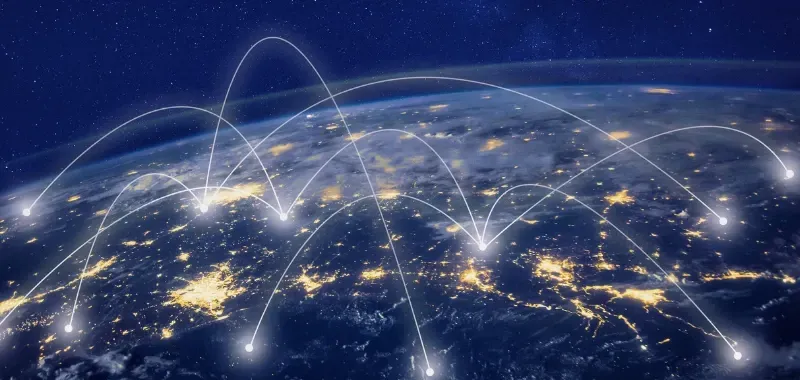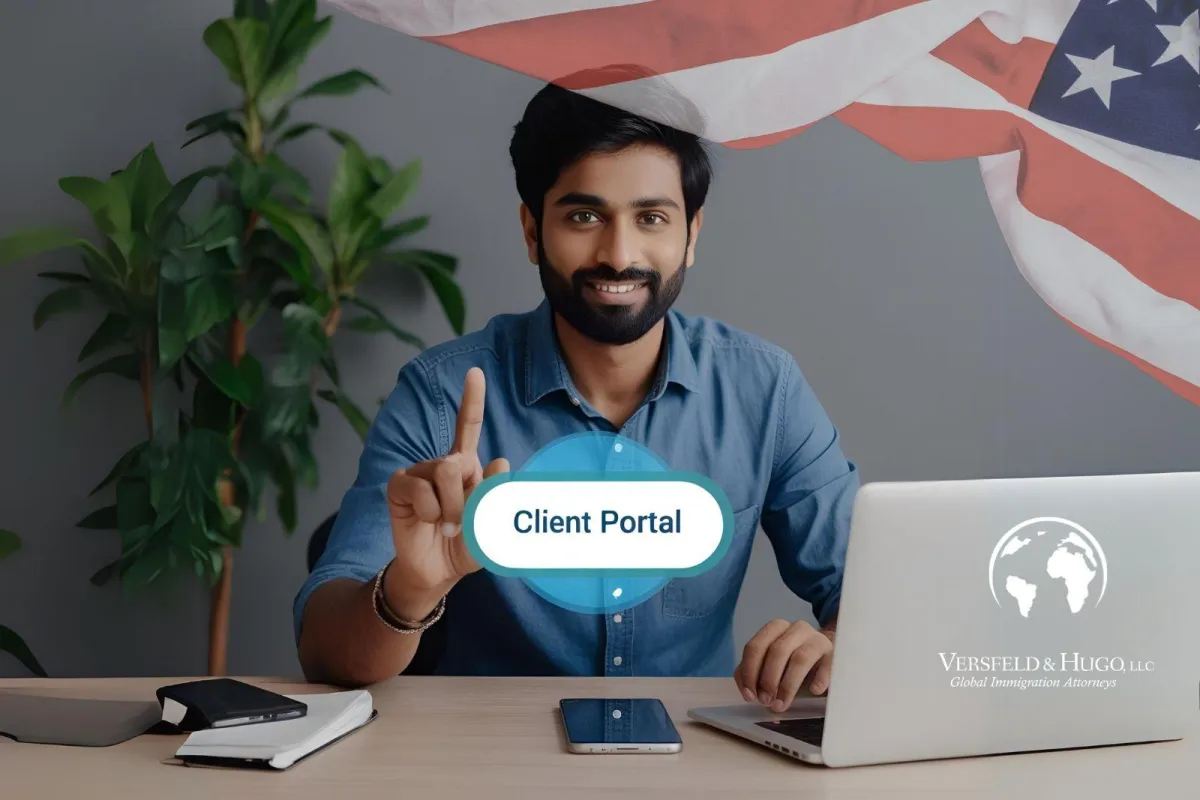FAQ'S
What are the main types of U.S. immigration categories?
There are three broad immigration categories:
Family-Based Immigration – for relatives of U.S. citizens or lawful permanent residents.
Employment-Based Immigration – for individuals sponsored by U.S. employers.
Humanitarian Relief – includes asylum, refugee status, Temporary Protected Status (TPS), and others.
What is a green card?
A green card (Form I-551) grants an individual lawful permanent resident (LPR) status, allowing them to live and work permanently in the U.S. Green cards are obtained through family sponsorship, employment, asylum/refugee status, or special categories.
How can I become a U.S. citizen?
You can become a U.S. citizen through naturalization if you:
Have been a permanent resident for at least 5 years (or 3 years if married to a U.S. citizen),
Are at least 18 years old,
Can read, write, and speak basic English,
Understand U.S. history and government,
Demonstrate good moral character.
What is the difference between a visa and a green card?
A visa allows you to enter the U.S. for a specific purpose (e.g., tourism, study, work) and is typically temporary.
A green card allows you to reside permanently in the U.S.
What is the process for sponsoring a family member?
To sponsor a family member:
File Form I-130 (Petition for Alien Relative).
Wait for USCIS approval.
The relative applies for a green card (via consular processing or adjustment of status).
Some categories have visa wait times depending on the Visa Bulletin.
What is the H-1B visa?
AThe H-1B is a nonimmigrant visa for workers in specialty occupations requiring a bachelor's degree or higher. The visa is employer-sponsored and subject to an annual cap.
How long does it take to get a green card?
Processing times vary by category:
Immediate relatives of U.S. citizens: ~12–18 months.
Employment-based categories: ~12–36 months or longer.
Visa backlogs for certain countries (e.g., India, Mexico, China) can significantly delay processing.
Can I work in the U.S. while waiting for my green card?
Yes, if you apply for and receive a work permit (Form I-765) while your adjustment of status is pending. If you are in a valid work visa status (e.g., H-1B), you can work under that visa.
What is DACA?
Deferred Action for Childhood Arrivals (DACA) is a program allowing eligible undocumented individuals who came to the U.S. as children to receive protection from deportation and a work permit. As of recent updates, new applications may not be accepted, depending on court rulings.
What is TPS (Temporary Protected Status)?
TPS is granted to nationals of designated countries experiencing conflict, disaster, or unsafe conditions. It provides temporary lawful status and work authorization but is not a path to permanent residency.
What happens if I overstay my visa?
Overstaying can lead to:
Accrual of unlawful presence, triggering 3-year or 10-year bans.
Ineligibility for certain immigration benefits.
Always consult an immigration attorney if you’ve overstayed.
Can I appeal a denial of my immigration petition or application?
Yes, in many cases. You may:
File an appeal (e.g., Form I-290B),
Request reconsideration or reopening,
Reapply with corrected information or new evidence.
What is the Public Charge Rule?
The public charge rule evaluates whether an applicant is likely to become primarily dependent on government assistance. As of 2022, it applies to green card applicants and excludes many public benefits like Medicaid for children and emergency services.
How can I check the status of my immigration case?
Visit the USCIS Case Status Tracker and enter your receipt number.
Should I hire an immigration attorney?
While not always required, an experienced immigration attorney is strongly recommended for complex cases, appeals, deportation defense, and visa petitions, to ensure compliance and avoid costly delays or denials.
Questions About the EB3 Green card process
What is an L visa?
The L visa is a nonimmigrant visa that allows multinational companies to transfer employees from their foreign offices to related offices in the United States. There are two primary types:
L-1A – For executives and managers
L-1B – For employees with specialized knowledge
Who is eligible for an L visa?
To qualify:
The employee must have worked for the foreign company for at least one continuous year within the past three years.
The employee must be coming to the U.S. to work for a parent, branch, affiliate, or subsidiary of the same employer.
The U.S. and foreign entities must have a qualifying corporate relationship.
What is the difference between L-1A and L-1B?
You can become a U.S. citizen through naturalization if you:
L-1A is for individuals in managerial or executive roles.
L-1B is for individuals with specialized knowledge about the company’s products, services, systems, or procedures
How long can someone stay on an L visa?
L-1A: Initial stay up to 1 year (new office) or 3 years (existing office), with extensions up to a maximum of 7 years.
L-1B: Initial stay up to 1 year (new office) or 3 years (existing office), with extensions up to a maximum of 5 years.
Can an L visa holder bring family members?
Yes. L visa holders can bring:
Spouse and unmarried children under 21 on L-2 visas.
L-2 spouses may work in the U.S. without needing separate work authorization.
L-2 children may study but cannot work
Can an L visa holder apply for a green card?
Yes. The L-1A visa is a common pathway to a green card under the EB-1C immigrant category (Multinational Manager/Executive), which does not require labor certification and often has faster processing.
L-1B holders may apply for a green card, usually under EB-2 or EB-3 categories, which generally require PERM labor certification.
How long does it take to get a green card?
Processing times vary by category:
Immediate relatives of U.S. citizens: ~12–18 months.
Employment-based categories: ~12–36 months or longer.
Visa backlogs for certain countries (e.g., India, Mexico, China) can significantly delay processing.
What is a Blanket L petition?
A Blanket L petition allows large multinational companies to pre-qualify for L visas, streamlining the application process for eligible employees. Employees apply directly at the consulate using the blanket approval notice instead of a separate USCIS petition.
What are the benefits of the L visa over other work visas like H-1B?
No annual cap or lottery
Dual intent is allowed (you can pursue a green card while on an L visa)
Spouse can work (L-2)
Not limited to occupations requiring a degree (unlike H-1B)
Can an L visa holder change employers?
No. L visa holders can only work for the petitioning employer. A change in employer would require a new visa petition with a qualifying corporate relationship.
What is considered "specialized knowledge" for L-1B?
“Specialized knowledge” involves:
How they are used internationally.
It must be distinct from ordinary industry knowledge and specific to the organization.
What is a “new office” L petition?
A new office petition is used when the U.S. branch is newly established (less than one year old). USCIS requires:
Evidence of office space,
A business plan, and
Proof that the new office will support an executive/manager within 1 year.
How long does it take to get an L visa?
Standard processing: 2–6 months depending on service center.
Premium processing: 15 calendar days for an additional fee.
Blanket L processing: Faster, processed directly at a U.S. embassy or consulate
Can an L visa be denied?
Yes. Common reasons include:
Inadequate documentation of qualifying relationship
Insufficient proof of managerial/executive role or specialized knowledge
Weak evidence of business viability for new offices
Can I travel internationally on an L visa?
Yes, L visa holders can travel freely during the visa’s validity period, as long as they maintain valid status and have a valid visa stamp in their passport.
What happens after the maximum stay on an L visa?
You must:
Switch to another visa,
Apply for permanent residence (green card), or
Depart the U.S. and stay abroad for at least one year before reapplying for another L visa.
EB-3 Green Card FAQ – Employment-Based Third Preference
What is the EB-3 green card?
The EB-3 (Employment-Based Third Preference) green card is for foreign nationals seeking U.S. permanent residency through employment in one of three categories:
Skilled Workers (at least 2 years of job experience or training)
Professionals (with a U.S. bachelor’s degree or foreign equivalent)
Other Workers (unskilled labor requiring less than 2 years of experience)
Who can sponsor an EB-3 applicant?
To qualify:
A U.S. employer must sponsor the applicant. Individuals cannot self-petition for an EB-3 visa. The employer must offer a permanent, full-time job and obtain required labor approvals.
What is the process for obtaining an EB-3 green card?
The EB-3 process typically includes:
PERM Labor Certification from the Department of Labor (DOL)
I-140 Immigrant Petition for Alien Worker filed by the employer with USCIS
Adjustment of Status (I-485) if already in the U.S., or Consular Processing if abroad
What is PERM Labor Certification?
PERM is the first step in most EB-3 cases. It requires the employer to:
L-1B: Initial stay up to 1 year (new office) or 3 years (existing office), with extensions up to a maximum of 5 years.
Conduct recruitment following strict DOL guidelines
Pay the prevailing wage for the position
How long does it take to get an EB-3 green card?
Timeframes vary based on:
Country of chargeability (India, China, and Philippines often have longer backlogs)
USCIS and DOL processing times
PERM (6–12 months), I-140 (6–8 months), and visa bulletin availability
Total wait: 1–3 years for most, but longer for backlogged countries.
Can family members be included?
Yes. EB-3 applicants may include their:
Spouse, and
Unmarried children under 21
Spouses are eligible for EAD work permits when applying through adjustment of status.
Can I switch employers during the EB-3 process?
Generally no, not before the green card is approved, unless:
The I-485 has been pending for 180 days or more, and
The new job is in the same or similar occupational classification
This portability provision is allowed under AC21 for I-485 applications.
What is the EB-3 priority date?
Your priority date is the date the PERM application was filed. This date determines your place in line for a green card based on the Visa Bulletin.
Can I apply for EB-3 while on a nonimmigrant visa (like F-1 or H-1B)?
Yes. Many applicants transition from F-1 (student), OPT, or H-1B status. You can file for adjustment of status (Form I-485) while remaining in the U.S. once your priority date is current.
Can I travel while my EB-3 application is pending?
Yes, if:
You have Advance Parole (Form I-131) approved, or
You are maintaining valid H-1B or L-1 status
Travel without permission can abandon your adjustment of status application.
What is the cost of an EB-3 green card application?
Approximate costs (employer + applicant):
PERM process: $0 filing fee (but recruitment expenses apply)
I-140: $700
I-485 (adjustment): $1,140 + $85 biometrics (per person)
Premium Processing (optional): $2,805 for I-140
Legal fees are separate and vary.
Can an EB-3 green card be denied?
Yes. Common reasons include:
Incomplete or inaccurate applications
Inability of employer to pay the offered wage
Fraud or misrepresentation
Inadmissibility (e.g., criminal history, immigration violations)
Is there a difference in processing time between Skilled Workers and Other Workers?
Yes. Other Workers (unskilled) typically have longer backlogs due to limited visa allocation under the “Other Workers” subcategory.
Can I upgrade from EB-3 to EB-2 if I get a more qualified job?
Possibly. You must:
Have a new job offer meeting EB-2 qualifications (typically requiring an advanced degree or exceptional ability)
Have the employer file a new PERM and new I-140
Your EB-3 priority date may be retained for the EB-2 petition.
E-2 Visa FAQ – Treaty Investor Visa
What is the E-2 visa?
The E-2 visa allows nationals of certain treaty countries to enter and work in the U.S. based on a substantial investment they are making in a U.S. business. It is a nonimmigrant visa, meaning it does not directly lead to permanent residence.
Who qualifies for an E-2 visa?
To qualify, the applicant must:
Be a citizen of a country that has a treaty of commerce and navigation with the U.S.
Make or be in the process of making a substantial investment in a U.S. business.
Be coming to the U.S. to develop and direct the business or work in an executive, supervisory, or essential role.
Demonstrate that the business is real, operating, and not marginal
What is considered a “substantial investment”?
There is no fixed minimum, but the investment must:
Be sufficient to ensure the successful operation of the business.
Typically range from $100,000 or more, though smaller investments may qualify depending on the nature of the business.
Be at risk (i.e., actively committed, not just sitting in a bank account).
What countries are eligible for E-2 visas?
Only nationals of countries with a bilateral investment treaty with the U.S. are eligible. Examples include:
Canada, United Kingdom, Germany, Japan, France, South Korea, Australia, and many more.
You can find the full list here: U.S. Department of State – Treaty Countries
Can I start a new business or buy an existing one?
Yes. E-2 investors can:
Start a new business in the U.S.
Buy an existing business, including franchises, as long as they meet all E-2 requirements.
How long is the E-2 visa valid?
Yes. EB-3 applicants may include their:
Validity varies by treaty country, typically between 3 months and 5 years, but can be renewed indefinitely.
Each entry allows a stay of up to 2 years, with the possibility of extensions.
Spouses are eligible for EAD work permits when applying through adjustment of status.
Can I bring my family on an E-2 visa?
Yes. E-2 visa holders may bring:
Their spouse, and
Unmarried children under 21
Spouses can apply for work authorization (EAD) and work in any lawful job. Children can attend school but cannot work.
Can E-2 visa holders work for another employer?
No. E-2 status is employer-specific and business-specific. You can only work for the E-2 business or a related entity, unless a change of status or new visa is filed.
Is the E-2 visa a path to a green card?
Not directly. However, some options for transitioning to a green card include:
EB-5 Immigrant Investor Visa (requires higher investment)
EB-1C (if the business grows into a multinational and the investor is in an executive role)
Family-based or employment-based green cards (through sponsorship)
Can I travel while my EB-3 application is pending?
Yes, if:
You have Advance Parole (Form I-131) approved, or
You are maintaining valid H-1B or L-1 status
Travel without permission can abandon your adjustment of status application.
What kind of businesses qualify for E-2?
Almost any legal, for-profit business may qualify, including:
Restaurants
Consulting firms
Retail stores
Tech startups
Franchises
The key is that the business must be real, active, and capable of generating more than marginal income.
Can an E-2 visa be denied?
Yes. Common reasons for denial include:
Investment not being substantial or "at risk"
Business not being viable or marginal
Failure to show intent to depart the U.S. upon visa expiration
Can employees of an E-2 company apply for E-2 visas?
Yes. Employees must:
Be the same nationality as the principal investor
Be coming to the U.S. to fill an executive, supervisory, or essential skill position
Can I apply for the E-2 visa from within the U.S.?
Yes, you may apply for a change of status to E-2 if you're already in the U.S. on a valid visa. However, you must leave the U.S. and apply at a U.S. consulate abroad to receive a visa stamp for re-entry.
How long does it take to get an E-2 visa?
Processing at a U.S. consulate: usually 4–8 weeks, depending on the location.
Change of status through USCIS: 2–6 months, or 15 days with premium processing.
What is a “marginal” business and why does it matter?
A marginal business is one that:
Does not have the present or future capacity to generate more than just enough income for the investor and their family.
E-2 businesses must show the ability to:
Support additional employees or
Make a significant economic contribution
E-2 Visa FAQ – Treaty Investor Visa
What is a priority date?
The priority date is your place in line for a green card. It determines when you can move forward with the final step of your green card application (either adjustment of status or consular processing).
Your priority date is:
Employment-based cases: the date your PERM labor certification was filed (or I-140 if no PERM is needed).
Family-based cases: the date your I-130 petition was filed.
What is the Visa Bulletin?
The Visa Bulletin, published monthly by the U.S. Department of State, shows which priority dates are currently eligible for green card processing. It tells you if a visa number is available for your category and country.You can view it at: https://travel.state.gov/content/travel/en/legal/visa-law0/visa-bulletin.html
What are the two charts in the Visa Bulletin?
There are usually two charts for both family-based and employment-based cases:
"Final Action Dates" (Chart A): When a green card can be issued.
"Dates for Filing" (Chart B): When you can file your adjustment of status (Form I-485).
USCIS announces monthly which chart can be used for adjustment of status: https://www.uscis.gov/visabulletininfo
What does it mean if my priority date is “current”?
If your priority date is earlier than the date listed in the Visa Bulletin for your category and country, your date is “current”, and you can:
File Form I-485 (if in the U.S.)
Proceed with consular processing (if abroad)
Why are there different dates for different countries?
Because U.S. immigration law imposes per-country limits, countries with high demand (like India, China, Mexico, and the Philippines) often have backlogs, resulting in longer wait times.
What does "retrogression" mean?
Retrogression means a priority date that was current in a previous Visa Bulletin has moved backward in a later one, often due to high demand for visas. This can delay green card issuance for applicants whose dates were previously current.
How can I find my category on the Visa Bulletin?
First, determine your green card category:
Family-Based (FB):
F1: Unmarried sons/daughters of U.S. citizens (21+)
F2A: Spouses/children of permanent residents
F2B: Unmarried adult children of permanent residents
F3: Married children of U.S. citizens
F4: Siblings of U.S. citizens
Employment-Based (EB):
EB-1: Priority workers (executives, professors, researchers)
EB-2: Advanced degrees or exceptional ability
EB-3: Skilled workers, professionals, and other workers
EB-4: Special immigrants (e.g., religious workers)
EB-5: Investors
Then check the country column for your country of birth, not citizenship.
Can I keep my priority date if I change jobs or categories?
Yes, in many cases. Priority date retention is allowed if:
You have an approved I-140, and
The new job is in the same or similar category.
This lets you keep your place in line even if you switch employers or move from EB-3 to EB-2, for example.
What happens if my priority date becomes current?
Once current, you can:
File I-485 if in the U.S. (if not already filed), and
Expect USCIS to adjudicate your green card.
If you are abroad, the National Visa Center (NVC) will schedule a visa interview at a U.S. consulate.
How often does the Visa Bulletin change?
The Visa Bulletin is released monthly, usually around the 8th–15th of each month. Changes depend on visa demand and availability.
Is there any way to speed up my priority date?
No. Priority dates are based on statutory limits, and there's no way to “buy” or “expedite” your place in line. However, upgrading your petition (e.g., from EB-3 to EB-2) may help if EB-2 is moving faster.
What is “cross-chargeability”?
If your spouse was born in a different country with a faster-moving category, you may use their country of birth for your priority date processing. This can help you avoid backlogs.
What is the Child Status Protection Act (CSPA)?
The CSPA helps certain children who turn 21 while waiting for a green card retain their eligibility as dependents by “freezing” their age during some parts of the process. It can protect them from aging out due to visa delays.
What is the Visa Bulletin "cut-off date"?
The cut-off date listed in the bulletin is the latest priority date that can be processed that month. If your priority date is before that cut-off, you’re eligible to proceed.
What should I do if my priority date is not current?
While waiting:
Processing at a U.S. consulate: usually 4–8 weeks, depending on the location.
Change of status through USCIS: 2–6 months, or 15 days with premium processing.
EB-5 Green Card FAQ – Immigrant Investor Program
What is the EB-5 visa?
The EB-5 Immigrant Investor Visa allows foreign nationals to obtain U.S. permanent residency (green card) by:
Investing in a U.S. business, and
Creating at least 10 full-time jobs for U.S. workers
It is a direct path to a green card for the investor, their spouse, and unmarried children under 21.
What are the EB-5 investment requirements?
The investor must:
Invest $1.05 million, or
Invest $800,000 in a Targeted Employment Area (TEA) or infrastructure project
Show that the investment will create or preserve at least 10 full-time jobs for U.S. workers within two years
What is a Targeted Employment Area (TEA)?
A TEA is:
A rural area, or
An area with high unemployment (at least 150% of the national average)
TEAs qualify for the lower investment threshold of $800,000.
What is a Regional Center?
A Regional Center is a USCIS-approved economic unit that:
Sponsors EB-5 investment projects
Allows investors to pool funds into larger projects
Enables indirect job creation to count toward the 10-job requirement
Investing through a Regional Center is often passive, while direct EB-5 requires active business involvement.
What are the steps in the EB-5 process?
Choose a project and invest the required funds
File Form I-526E (for Regional Center investors) or I-526 (for direct investment)
Upon approval, either:
File Form I-485 to adjust status (if in the U.S.), or
Go through consular processing abroad
Receive a 2-year conditional green card
After 2 years, file Form I-829 to remove conditions and get permanent resident status
What is a “conditional” green card?
EB-5 green cards are initially issued as 2-year conditional permanent resident cards. You must file Form I-829 within the 90-day window before it expires to:
Prove the investment remained in place, and
Prove that the 10 required jobs were created
Can my family come with me on an EB-5 visa?
Yes. Your:
Spouse, and
Unmarried children under 21
can also receive green cards and work, study, or live anywhere in the U.S.
Can I keep my priority date if I change jobs or categories?
Yes, in many cases. Priority date retention is allowed if:
You have an approved I-140, and
The new job is in the same or similar category.
This lets you keep your place in line even if you switch employers or move from EB-3 to EB-2, for example.
How long does the EB-5 process take?
Timelines vary but generally include:
I-526/I-526E processing: 12–24 months (can vary widely)
Consular processing or adjustment of status: 6–12 months
Conditional residency period: 2 years
I-829 (removal of conditions): 24+ months
Some countries (e.g., China, India) face visa backlogs, which can increase wait times due to annual limits.
How often does the Visa Bulletin change?
The Visa Bulletin is released monthly, usually around the 8th–15th of each month. Changes depend on visa demand and availability.
Is there a fast-track option?
Yes. Certain EB-5 categories now qualify for priority processing, especially:
Rural TEA investments
Infrastructure projects
High-unemployment TEAs (some)
Investors in these categories may benefit from reserved visa set-asides and faster adjudication.
Can I work for my EB-5 business?
Yes, especially in direct EB-5 investments, where the investor may play a managerial role. In Regional Center projects, active involvement is usually not required.
What if the business fails?
If the business fails:
Your green card may be at risk unless the required jobs were created and the investment was sustained
If the jobs weren’t created, Form I-829 may be denied
This is why due diligence and working with EB-5 professionals is critical.
Is the EB-5 visa permanent?
Yes, after the 2-year conditional period, you can apply to remove conditions and obtain a 10-year renewable green card, which is a permanent resident status.
Can I become a U.S. citizen through EB-5?
Yes. After receiving a green card, you may apply for U.S. citizenship after 5 years of permanent residency (including time under conditional status), provided you meet naturalization criteria.
What are the risks of EB-5?
Investment risk: Your capital must be “at risk” per USCIS rules.
Immigration risk: If jobs are not created or rules are not followed, your green card could be denied.
Project risk: Poorly managed projects may fail.
Always conduct due diligence and work with qualified attorneys and investment professionals.
Can I invest through a loan or gift?
Yes, but:
The investment funds must be lawfully sourced, and
You must prove the gift or loan was not secured by the EB-5 business itself
USCIS will closely scrutinize the source and path of funds.
Can I live anywhere in the U.S. on an EB-5 visa?
Yes. You can live, work, and travel freely in the U.S. regardless of where your investment is located. There is no requirement to live near the business.
Can I use cryptocurrency or foreign assets as my investment?
Possibly. USCIS accepts funds from cryptocurrency or other assets, but you must provide clear documentation showing:
Lawful source of funds
Proof of liquidation or transfer to U.S. dollars
Legal compliance with both U.S. and foreign laws
Can I apply for EB-5 while on a nonimmigrant visa (e.g., F-1 or H-1B)?
Yes. Many investors apply while on valid visas. You may be able to adjust status (Form I-485) once your I-526 is approved and a visa is available.
H-1B Visa – Frequently Asked Questions (FAQ)
What is the H-1B visa?
The H-1B visa is a nonimmigrant visa that allows U.S. employers to temporarily hire foreign workers in specialty occupations requiring:
Theoretical and practical application of specialized knowledge
At least a bachelor’s degree or equivalent in a specific field
Who is eligible for an H-1B visa?
A foreign national must:
Hold a U.S. bachelor's degree or higher (or equivalent)
Be offered a job in a specialty occupation (e.g., IT, engineering, finance, healthcare)
The employer must petition for the worker
What is a specialty occupation?
A specialty occupation typically requires:
A bachelor's degree or higher in a specific field
Common roles: software engineer, architect, accountant, scientist, analyst, etc.
How long is an H-1B visa valid?
A Regional Center is a USCIS-approved economic unit that:
Initial duration: Up to 3 years
Extensions: Up to 6 years total
Some extensions beyond 6 years are allowed for those pursuing green cards (PERM/I-140)
Is there a cap on H-1B visas?
Yes. The annual cap is:
65,000 regular H-1B visas
20,000 additional visas for those with a U.S. master’s degree or higher
Certain employers (e.g., universities, research institutions) are cap-exempt
What is the H-1B lottery?
Due to high demand, USCIS runs an electronic random selection process ("lottery") each year:
Employers register candidates during a short March registration period
Selected registrants may then file full petitions
Can the H-1B visa lead to a green card?
Yes. The H-1B is "dual intent", allowing visa holders to pursue permanent residency (green card) while in the U.S.
Can I change employers on H-1B?
Yes. You must file an H-1B transfer petition with the new employer. You can start working as soon as USCIS receives the new petition.
Can H-1B holders bring family?
Yes. Spouses and children (under 21) may apply for H-4 visas. Spouses on H-4 may work only if the H-1B worker has:
An approved I-140 (employment-based green card step), or
Is on extended H-1B time beyond 6 years under AC21
What are the employer’s obligations?
An H-1B employer must:
Pay the prevailing wage for the role and location
File a Labor Condition Application (LCA) with the Department of Labor
Maintain a public access file
Cover certain government filing fees (not passed to the employee)
Can I work for multiple employers on H-1B?
Yes, but each employer must file a separate H-1B petition (called “concurrent H-1B employment”).
What happens if I’m laid off or quit?
You have a 60-day grace period (or until your I-94 expires, whichever is shorter) to:
Find a new H-1B employer and file a transfer
Change to another visa status
Leave the U.S.
Can I travel internationally on H-1B?
Yes, but you need:
A valid H-1B visa stamp in your passport (unless using Automatic Revalidation)
Valid I-797 approval notice
Recent employment verification letter
Is premium processing available for H-1B?
Yes. USCIS offers premium processing for a fee, promising adjudication within 15 calendar days for H-1B petitions.
Can I start working after H-1B approval?
You may begin H-1B employment once:
The petition is approved, and
The start date listed on the petition has arrived
If you're changing status in the U.S., you can work once approval and start date align. If you’re abroad, you must obtain a visa stamp and enter the U.S. before starting.
Can I study while on H-1B?
Yes. You can take classes part-time or full-time as long as:
You continue to maintain H-1B employment
Your primary purpose in the U.S. remains work-related
What happens after 6 years on H-1B?
You must leave the U.S. for at least 1 year before starting a new H-1B, unless:
You have a pending or approved I-140, or
You qualify for H-1B time extensions under AC21 rules
What is the cap-gap rule for F-1 students?
The cap-gap rule allows F-1 students with OPT to remain in the U.S. and continue working:
If their H-1B petition is filed before OPT expires
And starts on October 1st of the same year
What is the Public Access File (PAF)?
Employers must maintain a PAF showing:
The LCA was properly filed
Required wage information
Notice of filing given to U.S. workers
This file must be made available to the public upon request.
Can H-1B be denied after lottery selection?
Yes. Selection in the lottery only allows the chance to apply. USCIS can still deny the actual petition due to:
Lack of specialty occupation
Employer issues
Degree not matching the job
Inadequate documentation
Form I-829 FAQ – Removing Conditions on EB-5 Green Card
What is Form I-829?
Form I-829, Petition by Investor to Remove Conditions on Permanent Resident Status, is filed by EB-5 immigrant investors to:
Remove the 2-year conditional status on their green card
Obtain a 10-year permanent green card
Who must file Form I-829?
All EB-5 conditional permanent residents who:
Invested in a qualifying U.S. commercial enterprise
Created (or maintained) at least 10 full-time U.S. jobs
Spouse and children are included as derivatives on the same petition.
When do I file the I-829?
You must file:
Within 90 days before the second anniversary of your conditional green card approval (not entry date)
Example: If you became a conditional permanent resident on June 1, 2023, your filing window is March 3 – May 31, 2025
What documents must I include?
Copy of your permanent resident card (front and back)
Proof of the investment:
Business registration, financials, bank statements
Evidence the investment was sustained:
Tax returns, payroll, contracts, expenses
Proof of job creation:
I-9s, employee W-2s, payroll summaries
If in a Regional Center project:
Economic report or job creation analysis
How long does USCIS take to process the I-829?
Yes. The annual cap is:
As of now, I-829 processing times often range from 24 to 36 months
You receive a receipt notice (Form I-797) that extends your conditional status for 48 months while pending
Can I travel while my I-829 is pending?
Yes, if you:
Have your expired green card + I-829 receipt notice showing extension
Or have valid I-551 stamp in your passport from a USCIS office
Can I work while I-829 is pending?
Yes. The receipt notice extends your conditional resident status and employment eligibility while USCIS processes your petition.
What happens if I miss the I-829 filing window?
Failure to file within the 90-day window may result in:
Automatic termination of your green card
Possible deportation proceedings
You may try to file late with a written explanation, but it’s at USCIS’s discretion to accept
What if the investment didn’t create 10 jobs yet?
You may still be approved if you can prove:
Jobs will be created within a reasonable time (usually within 1 year)
You maintained the investment in good faith
What if my business failed or closed?
An H-1B employer must:
Investment was at risk, and
You show good faith effort to sustain the investment and create jobs
It's a case-by-case evaluation
Do my spouse and children have to file separate I-829s?
No. Only one I-829 petition is needed for the investor.
Include dependents’ names and A-numbers on the form
They must also submit biometric data (fingerprints/photo)
What is the filing fee for I-829?
As of May 2025, the fees are:
Filing fee: $3,750
Biometric services: $85 per person
(Always check current fees at www.uscis.gov/i-829)
What happens after I-829 is approved?
You (and your family) receive:
A 10-year permanent resident card
No further investment documentation is needed unless you apply for citizenship
Can I apply for citizenship after I-829 approval?
Yes. You may apply for U.S. citizenship 5 years after becoming a conditional resident (not from the date I-829 is approved).
Example: If you became a conditional LPR on June 1, 2023, you can apply for citizenship as early as June 1, 2028

© 2024 Versfeld Law. All rights reserved. | Privacy Policy | Terms and Conditions | Legal Disclaimer | Powered by DNA Super Systems

